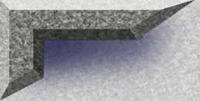|
Preventing Heat Stroke in Your Pet

When humans get hot, we sweat. When animals get hot, they
pant. Unfortunately, panting is not the most efficient means of cooling down an overheated body. During those hot
summer months we can help our pets stay cool (and prevent heat exhaustion)
A Few
Simple Precautions Are:
-
Provide access to shade and plenty of cool drinking water.
-
Consider purchasing a kiddy pool and filling it with
a few inches of clean water. This is a fun and effective way for your dog to cool down.
-
Have a well-ventilated doghouse that is kept in the shade—often
the plastic types are quite cool inside on a hot day. Doghouses aren't only for dogs—they work for cats, too.
-
If you have a rabbit, keep the hutch in the shade—in
the wild, rabbits spend the hottest part of the day in their underground burrows where it's cool.
On
hot days leave your pet at home
-
Leave car windows completely rolled down for maximum
airflow. Use pet-secure window screens or keep your pet in a well-ventilated kennel. Use a travel food and a water feeder
to keep fresh water available.
-
Use a secure dog leash to attach your dog to a shaded
post or tree while you get your groceries, deliver your package or pick up your prescription.
-
Bring a gallon of fresh, cool water and a bowl from home.
Some dogs and cats appreciate ice cubes in their water. ( Hint : A six-pack cooler holds about a gallon of water.)
-
Check on your pet every few minutes.
Pets Susceptible
to Heat Stroke
This Would Include:
-
young, old and overweight animals
-
animals with shortened muzzles (i.e. bulldogs, Lhasa
apsos, pugs, Pekinese, Persian cats)
-
animals with heart and/or respiratory problems
-
animals with thick, heavy coats.
If
your pet falls into one of these categories,
minimize
the likelihood of heat stroke by:
-
keeping the young, the old and the poor in health out
of the heat.
-
keeping your pet at a healthy weight.
-
keeping your longhaired cat or dog clipped during the
hot months.
Signs of Heat
Stroke
Fortunately the
signs of heat stroke are
pretty
obvious. When it's hot,Look For:
-
excessive panting
-
excessive salivation (drooling and swallowing)
-
a racing pulse
-
legs, nose and ears that are hot to the touch (indicates
elevated body temperature)
-
vomiting.
Emergency First Aid
The first
thing to do for an overheated pet is to cool her down.Bring your pet indoors into air conditioning. Initially, you can treat
your pet by immersing her in cool, not cold, water. Offer small sips of cool water—enough to keep her mouth moist—but
do not allow her to drink.If she continues to have problems or if the signs become more severe, take her directly to the veterinarian.
On the way to the hospital, apply ice packs or cold towels to her head, neck and chest to keep her as cool as possible. It's
important not to overcool your pet—just try to bring her temperature down to normal.

|

